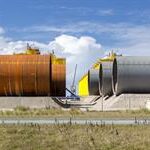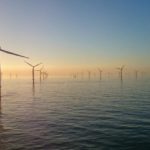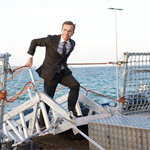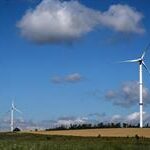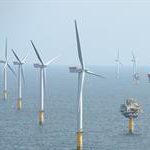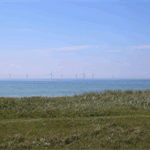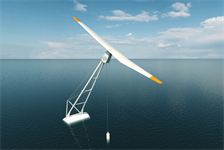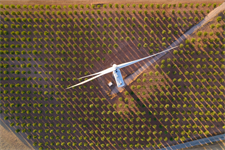Shipping power in batteries from offshore wind farms
Energy Disrupter
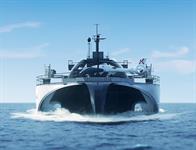
Japanese firm PowerX plans to build vessels loaded with batteries to transfer electricity from offshore wind farms back to shore.
It also wants to build a factory in Japan to produce grid and marine batteries to enable delivery of the power transfer vessel, as well as electric vehicle (EV) fast-charging batteries.
PowerX believes the first vessel from the series – capable of delivering 222MWh – will cost JPY 3 billion ($27 million) per ship. It plans to raise capital through private funding, including partnerships with major Japanese shipyards.
Electricity generated by the wind farm would be transported via array cables to an HVDC platform collector and converter, which would then feed into a PowerX mini-grid and then into the batteries on board the vessel.
PowerX believes it will take about four hours to fully charge the batteries from an offshore wind farm.
It claims its ship will be more resilient to natural disasters than subsea power cables traditionally used to transmit power from offshore wind farms.
PowerX also argued such a vessel will be cheaper and quicker to develop and have a far lower impact on the environment than subsea cables.
The company plans to target markets around the world.
It aims to complete the first model of its Power Ark series, the Power Ark 100, in 2025. The vessel will carry 100 grid batteries capable of delivering 222MWh combined — equivalent to the total electricity consumption of 22,000 Japanese households in one day, it claimed.
The ship will be 100.5 metres long and 21.9 metres wide, with a draft (the distance between its keel and the waterline) of 5 metres. It will be able to carry a load of 2,200 tonnes and have a top speed of just under 26km/h.
It will be capable of travelling up to 300km when running only on electricity and will be able to unlock long-distance, intercontinental clean power transmission when it is powered by both electricity and sustainable biodiesel fuels, PowerX added.
PowerX later plans to build two further vessels – the Power Ark 1000 and Power Ark 3000, which will be capable of delivering 2,090MWh and 5,660MWh respectively.
The firm believes its Power Ark vessels will enable energy transmission between any two ports.


